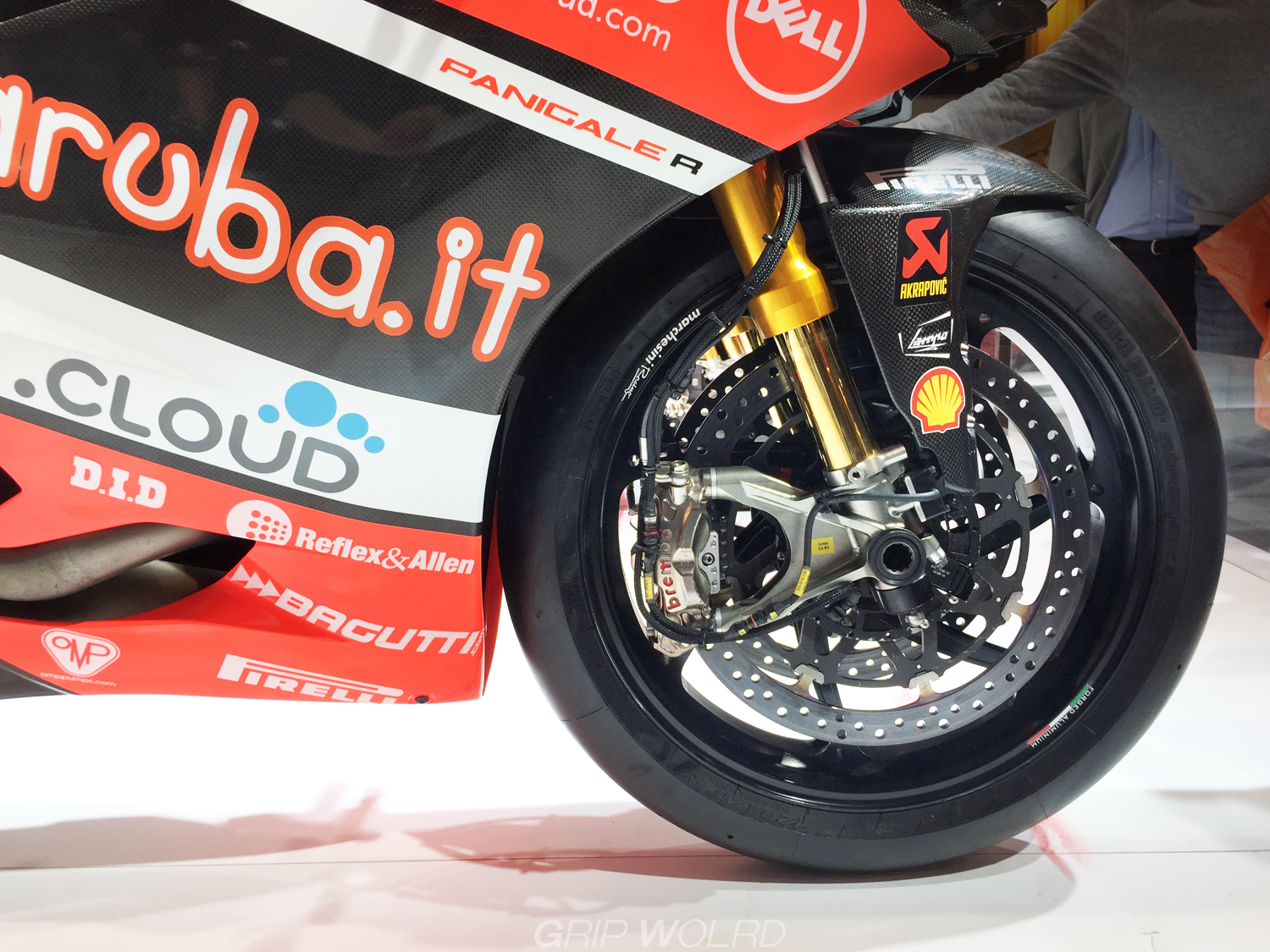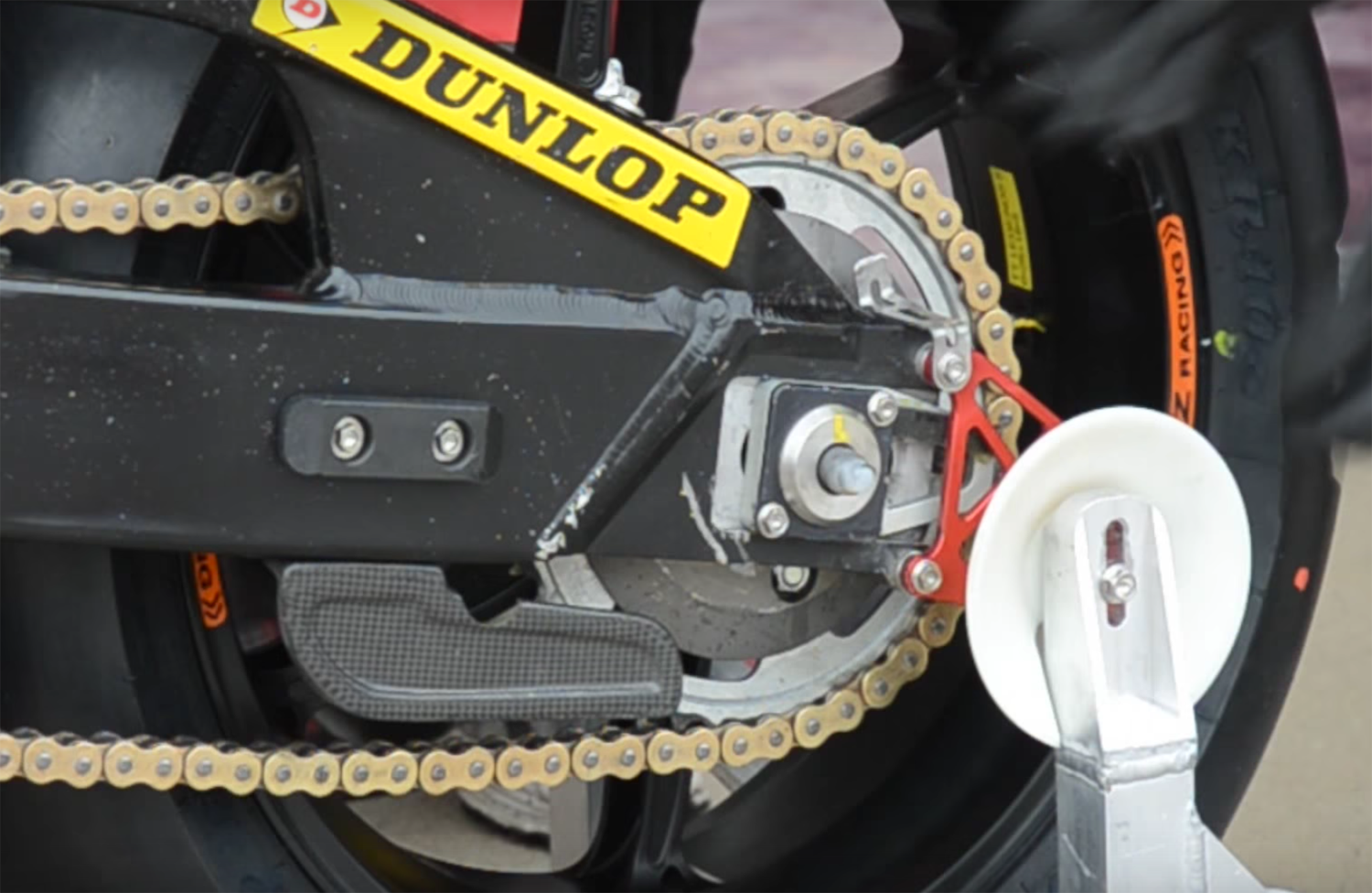For anyone who has removed and mounted wheels on a bike knows that it isn’t such a graceful process, especially when compared to a car.
At the rear you have to pull out the wheel without dragging the caliper and bracket with it, and at the front you first have to un-bolt the calipers before anything is coming out; not to mention the wheel spacers are guaranteed to fall out. Yet in racing you may often see a mechanic effortlessly yank out the old wheel and simply push in a new one, so there must be a reasonable difference between these race bikes and an average road bike when it comes to the design of the axle and wheel assembly.
Quick release axle assemblies are the key to be able to effortlessly swap wheels without having to remove or support the components around them. But unfortunately, and surprisingly, they are not a popular modification to be found and the aftermarket world has little to no support in this area. Currently I’ve only found one company called Fast Frank Racing that makes kits, who is quite well known for it.

Ducati Panigale R WSBK with quick release axle and swivel front fender mount
The majority of the kits found on race bikes are specific one-offs made by race teams and they are really only mounted to endurance bikes and World Super Bikes as pit stops may be required.
First, lets enjoy a great video demonstrating the quick change wheel systems in practice, by Honda Racing.
Interestingly MotoGP bikes have no real quick release system as usually they will simply swap bikes for a tire and setup change (Although they do have quick release brake lines).

Left: Yamaha M1 2016 MotoGP with plain axle – Right: Ducati Desmosedici GP 2016 with basic nut for axle
But the truth is that anyone can find advantages from this system due to its great convenience; tire changes, brake pad replacement and cleaning are all made much easier, especially when you’re trying to do them in between sessions at a track day.
So what are the design details of these systems?

FRONT AXLE
The issue at the front is relatively simple; the calipers are in the way of the wheel when trying to be removed. The universal solution that I’ve seen so far is to have a new rotational mount for the front fender, which allows for the fork ends to swivel so that the caliper can rotate out of the way, while keeping the fender mounts in the same position.

Left: Honda CBR1000RR Endurance World Championship has a upper and lower fender mount – Right: Kawasaki ZX-10RR WSBK has a simpler fork tube mount for the fender.
The new front fender brackets mount to the inner fork tube ends, which are held in position by some retaining rings or clips, and sometimes even at the bottom of the forks to give a wide, stiffer mount spacing as seen on the Honda.

The front axles have an external hex instead of an internal one, and also feature these lovely pull cups. The cups help in guiding the socket onto the head when they are jammed in during racing for a fast pit stop and they also help the mechanic in pulling out the axle.
The pull cups also seem to feature some cuts around base of them, but can’t figure out what they would be for.

On the other side, the nut has been replaced by a threaded insert which is secured to the fork; this is done so that you don’t need an additional tool to hold it in place. The axles also feature plastic or teflon pointed ends to help in centring the axle and to protect the threads when the axle is rammed in.
The calipers can also feature a guide to help centre the disc into the pads and pull the caliper in as the wheel is slid backwards into position, which can be seen here on the centre side of the caliper.

And finally, there are also captive wheel spacers, which use the seals to retain the spacers in place.
REAR AXLE
The rear axle is a little simpler as it’s only the rear caliper which can cause issues. Supporting the wheel, while threading the disc in between the pads can be bit tricky when it’s a moving target.

Honda CBR1000RR Endurance World Championship rear quick release axle with pull cup.
The solution here is to have a fixed rear caliper bracket which is bolted to the axle adjusters; this way the caliper stays in place and also means that the bracket is butt up against the swing-arm and already aligned for the axle.
This kit by Fast Frank Racing shows it clearly, as the caliper bracket is threaded into the axle adjuster through the swing-arm. Note also the bolted thread to eliminate the nut, as seen on the front axle.

Fast Frank Racing‘s GSX-R quick change kit with bolted caliper bracket and captive nut.

Honda CBR1000RR Endurance World Championship fixed threaded insert.
And of course, captive wheel spacers too.
These are the details I’ve found so far on quick change wheel systems and I’ll update if I find more information about them. If someone finds that I’ve made an error on how these systems work, please let me know and I’ll correct the post.
Meanwhile there are others on the market.
https://m.facebook.com/story.php?story_fbid=332008694075791&id=100017999891170
Awesome stuff, the system looks great!
I always assumed the slots in the pull cups were so that in the event of damage to the cups in a crash, the mechanics could just snip the outer part off with some side cutters and replace the axle with a new cup already installed. Great article!
Very interesting point, never thought of that!!
L74 race products uk do a wide selection of rear quick change systems
Excellent tutorial. Evev for an old guy like me
thanks for this detail